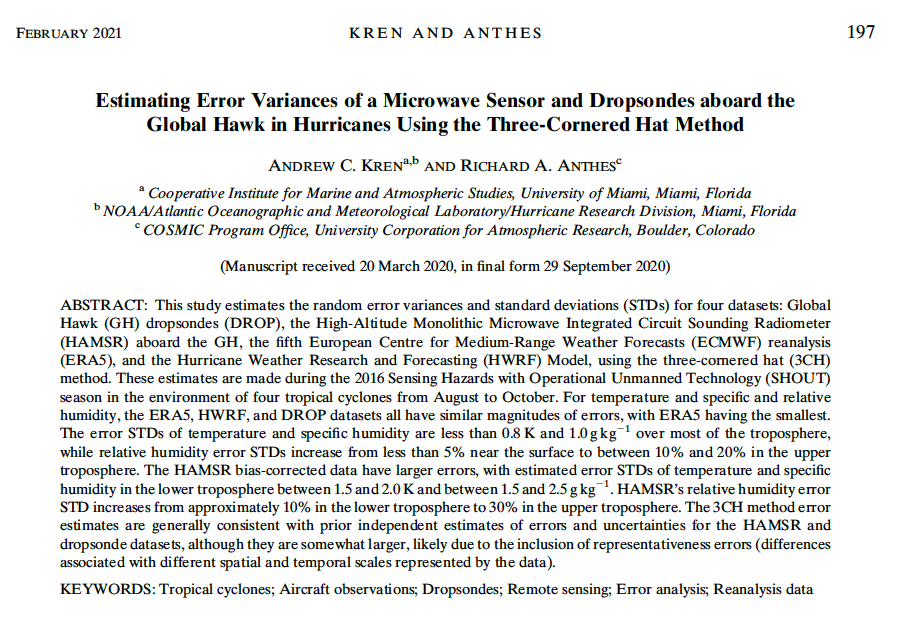The Global Hawk, a drone or autonomous aircraft system, has been used since 2010 to gather data to improve weather forecasts. The Global Hawk releases dropsondes that measure temperature, pressure, humidity, and wind up to four times every second between 60,000 feet and the surface, providing thousands of measurements. The Global Hawk also has the High-Altitude Monolithic Microwave Integrated Circuit Sounding Radiometer (HAMSR) that provides temperature and moisture observations at 25 levels below the aircraft every second. This study estimates the errors associated with HAMSR, which are important to correctly putting the data into computer forecast models.

The errors are determined by comparing the data from HAMSR with those from dropsondes, and also two computer models, the Hurricane Weather Research and Forecasting (HWRF) model and the European Centre for Medium-Range Weather Forecasts (ECMWF) ERA5 reanalysis.
Important Conclusions:
- Model and dropsonde errors are about the same size.
- Temperature and specific humidity (the amount of water vapor in a kg of air) errors are less than 0.8 K and 1.0 g kg-1, respectively.
- The HAMSR instrument error is larger than that from the other data sets. The error varies between 1.5 and 2.0 K and 1.5 and 2.5 g kg-1 for temperature and specific humidity, respectively.
- The larger errors of HAMSR are likely due to providing very few observations below the aircraft compared to dropsondes and to itsz indirectly (remotely) observing the atmosphere from the aircraft; dropsondes measure directly where they are located as they fall to the surface.
- The results confirm the high accuracy of the dropsondes released from the Global Hawk.
For more information, contact aoml.communications@noaa.gov.

